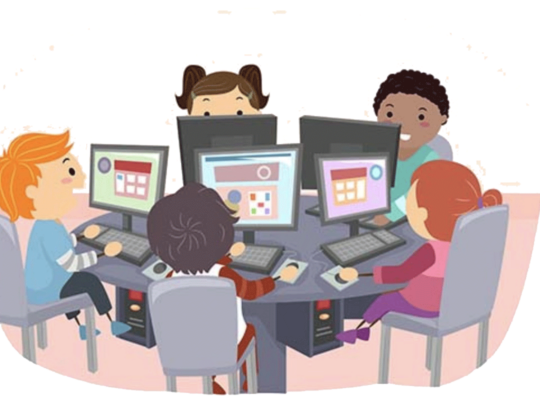The Covid-19 outbreak and the resulting lengthy lockdown have made working and studying from home the new normal. Though the concept of online learning existed prior to the pandemic, it has undoubtedly reached a whole new level and intensity in these hard times. In the past year, we have witnessed classrooms and learning take their form in small rectangles of our laptop and phone screens. It was a nightmare for both the teachers as well as the students to adjust to this major shift in the teaching-learning dynamic. While e-learning proved to be the biggest saviour during the pandemic, it had come with its own set of challenges for everyone.
Challenges faced over the time
- One of the greatest roadblocks to online learning is the absence of powerful and dependable internet connections, since most residential internet connections are either low bandwidth or have reached their limitations. For students and professors alike, simply signing in for a class becomes a time-consuming task. Even if boosting your broadband connection appears to be a viable option, it is far from foolproof.
- The proper assessment of a student is an important part of the educational process. In normal conditions, pupils are required to take a test or sit for an examination on school grounds; however, this is no longer an option. Assessing students by a Multiple-Choice Question (MCQ) mechanism is still possible as a placeholder in online learning, but genuine learning is assessed through a subjective evaluation, which is one of the main hurdles for traditional edtech systems that are largely MCQ based.
- Accept it or not, there are a significant number of students that attempt to take the easy route to success. When they use an online learning system, it has become easier for them to cheat. While we agree that the primary focus should be on self-discipline, educational institutions should consider ways to reduce the risk of students undermining the sanctity of tests that are intended to improve the class’s and students’ learning.
- Last but not least, one of the most major issues connected with online learning is monotony and boredom, which is exacerbated by increasing screen time and the practise of sitting in one place for long periods of time. Teachers and educational institutions are responsible for breaking this monotony or tiredness. A persistent effort to make the session as participatory as possible is required.
It has taken an immensely long period of time for everyone to overcome these challenges and work on them to feel comfortable with the online platforms, yet we haven’t come to terms with the usage of it completely.
Now that the pandemic situation is getting better in many parts of the nation, schools, colleges and universities are re-opening phase wise. In fact in many parts of the country, educational institutions are open and running in full power. But even with that, students are finding it extremely difficult to cope up with the regular curriculum and come to terms with it.
Being at home for so long has caused students and teachers to find comfort in isolation. The feeling of studying and discussing various topics as a group has evaded. People are left with very little motivation and some have even forgotten how to deal with their counterparts.
In order to make things smoother for the students, the teachers and the authorities can work together. Here are a few suggestions that could be implemented:
- Teachers could make interactive PPTs for their students so that it gives them a sense of familiarness in the beginning. And not just that, but we all know that PowerPoint presentations have proved to be an efficient way in the line of teaching-learning.
- For students in primary grades, parents and teachers could collaborate to form a schedule that is less stressful for the kids. Since they have been in the pandemic for so long, they haven’t scored the opportunity to interact with their fellow friends and teachers as compared to the others.
- Students could be given creative assignments as a part of their assessment which has to be done in groups. This could open gates to communication between fellow students and an atmosphere of ease and comfort could be created.
- Group discussions and debates act as a great ice-breaker. So they could be added in everyday curriculum for the students.
- Institutions could even experiment with a blend of online and offline teaching. Few days in the schools or colleges and a few at home could act as a great start for the comfort of teachers as well as students.
Keeping in mind the fact that this hasn’t been easy for anyone to deal with, everyone has to come together to help each-other adapt and grow. It is not possible for just one person to make a change, so we need to come together to make this happen!

About the Author: Nishtha Gupta
Nishtha Gupta is a student of English Literature at Jamia Millia Islamia and currently based in New Delhi. She is extremely passionate about writing on technological advancements in the field of education. She also writes poetry and fiction. Nishtha has an e-book published with Amazon’s Kindle. Her other interests include music, reading and dancing. She wishes to pursue her career in the field of publishing.
This article has been re-published on Medium





